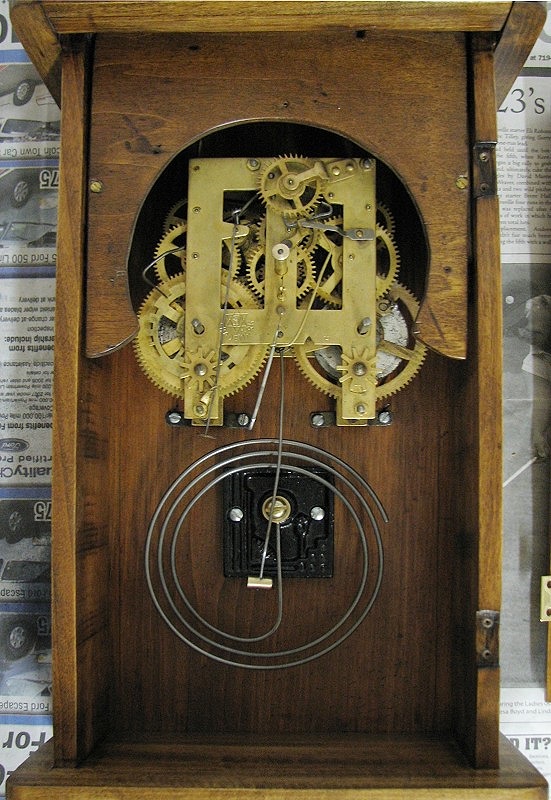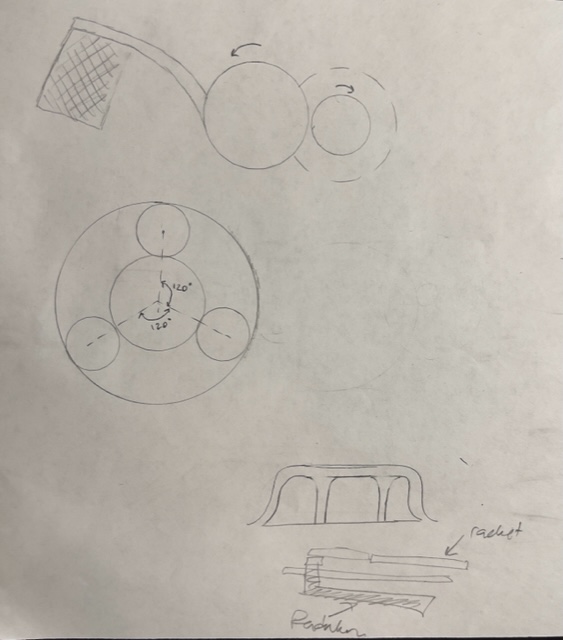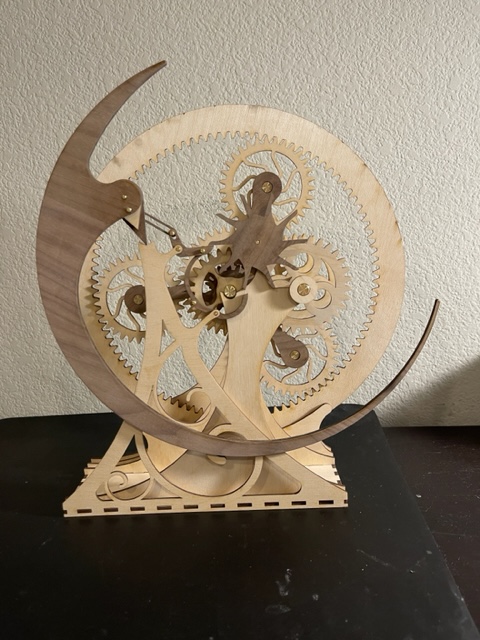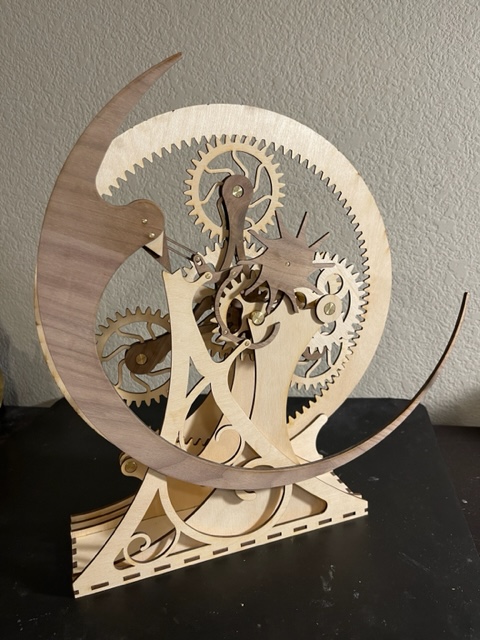

Since the prompt for this project, creating a dynamic artifact, was so board, I knew I wanted to incorporate mechanical design into the focus of aesthetics. I have always really enjoyed clean mechanical designs with intricate gear systems. Their complexity has always impressed me, and continues to do so as I have learned more about their operation and design. While ideating for this project, I was immediately drawn to the idea of an escapement mechanism or a kinetic sculpture. These both incorporate the celebration of mechanisms and mechanical design that I am normally drawn to, while simultaneously incorporating that design into their aesthetics. An escapement is a wide category of mechanisms that control the conversion of potential energy to mechanical energy. While I really liked this as a concept, I wasn’t enthusiastic about the traditional design of these mechanisms because of the large and sometimes obtrusive pendulum. This led me to looking at wooden kinetic sculptures because they share many of the same elements, though typically work around the large pendulum and weight requirement.


This led me to find a designer and artist, Derek Hugger, who makes a wide variety of of organic kinetic sculptures. These sculptures are highly impressive, and I soon realized that it would be outside of the scope of this project to attempt to create a mechanism using the same ideas. Upon doing more research, however, I discovered organic escapement designs by a designer named Dolf Perenti. I was drawn to the organic and non-traditional aesthetic of these escapements, and they presented much more feasible design challenge. It would still be an ambitious project, but I would be able to actually finish and fabricate a more simplistic design while still adhering to my design and aesthetic goals. From this point, I began working on simplistic hand sketching and designing an escapement mechanism in Solidworks to first model the behavior to ensure it matched what I wanted it to.
Moving through the CAD process, I began by first modeling the actual escapement mechanism before mapping out a gear system and pendulum that fit into the aesthetic that I was aiming for. This included several iterations across many of the components until a reached a state that I was happy with. For the actual project specifications, these can be broken down into functional and aesthetic specifications. For functionality, I wanted the mechanism to be able to convert potential energy into kinetic energy and I wanted it to be relatively easy to manufacture. For the aesthetics, I wanted to follow the aforementioned antique clock/wooden kinetic sculptures that were highlighted above. I also wanted to ensure that the aesthetic was clean and consistent and with a size that it could easily be interpreted from a moderate distance. To reach the antique clock aesthetic I wanted to incorporate mainly wooden elements, while using brass rod sections to support and stabilize the different components. I also really wanted to highlight the “celebration of gears and mechanisms” that are so prevalent with these types of mechanisms. While, in the case of antique clocks, this was primarily functional, this has been incorporated into a variety of aesthetics including steampunk which celebrate the use of gears and other mechanical mechanisms.


After completing a first iteration of the CAD for my escapement (left), I realized there were several areas that I wanted to improve. I wanted to add ornamentation to the front panel and gears, change the design of the pendulum, and change how the carrier for the planetary gear system operates. Overall, I discovered that I wanted to thin out many features, and, as an homage to the kinetic sculptures and organic escapement that inspired me, I wanted to add more natural curves to the final design. This, combined with the aesthetic of the gears, helps to somewhat add to the visual complexity and helps to highlight the different mechanisms that are being employed within the device. After completing the final CAD, I moved on to fabrication.


The above sculpture is what I fabricated. While it doesn’t match my functional goals, it does fit my aesthetic goals. The darker walnut sections provide an appealing contrast with the lighter pine and the metal brass fittings. These fittings also help to draw focus to the different gear systems within the art piece.

3 Comments. Leave new
[…] the fabrication, more information on the aesthetics of the artifact can be found in my first post here. While the artifact isn’t as functional as I would like currently, there are a few minor […]
Wow Palmer, that is a cool project. I love the intricate details of your design. The carving like swirls on the base plate stand are a fantastic touch to the project. I think your idea of a darker walnut accent was another great touch. It’s clear you had lots of attention to fine detail. Why doesn’t this match your functional goals? DO you have pans to stain any of the wood?
Hi Alex, thank you! There are a few reasons why it doesn’t meet my functional goals currently. One of the largest is due to friction between the different components which prevents them from rotating. Additionally, the front pendulum is weighted a bit incorrectly, leading to it favoring one side over another which hampers its role as a pendulum. I am not sure if I have any plans to stain it as of right now because I like the look of just the sanded wood. I may try some test pieces to see how I feel about it!